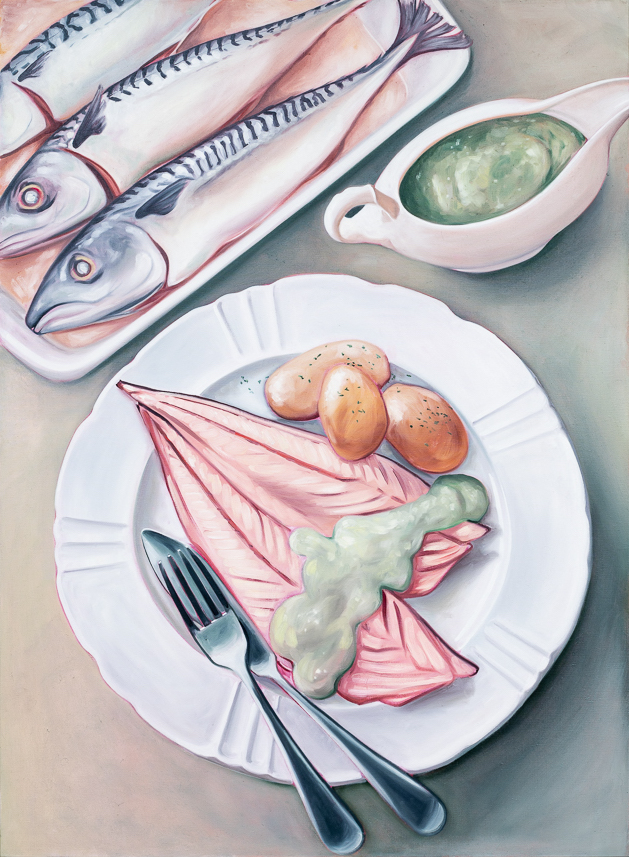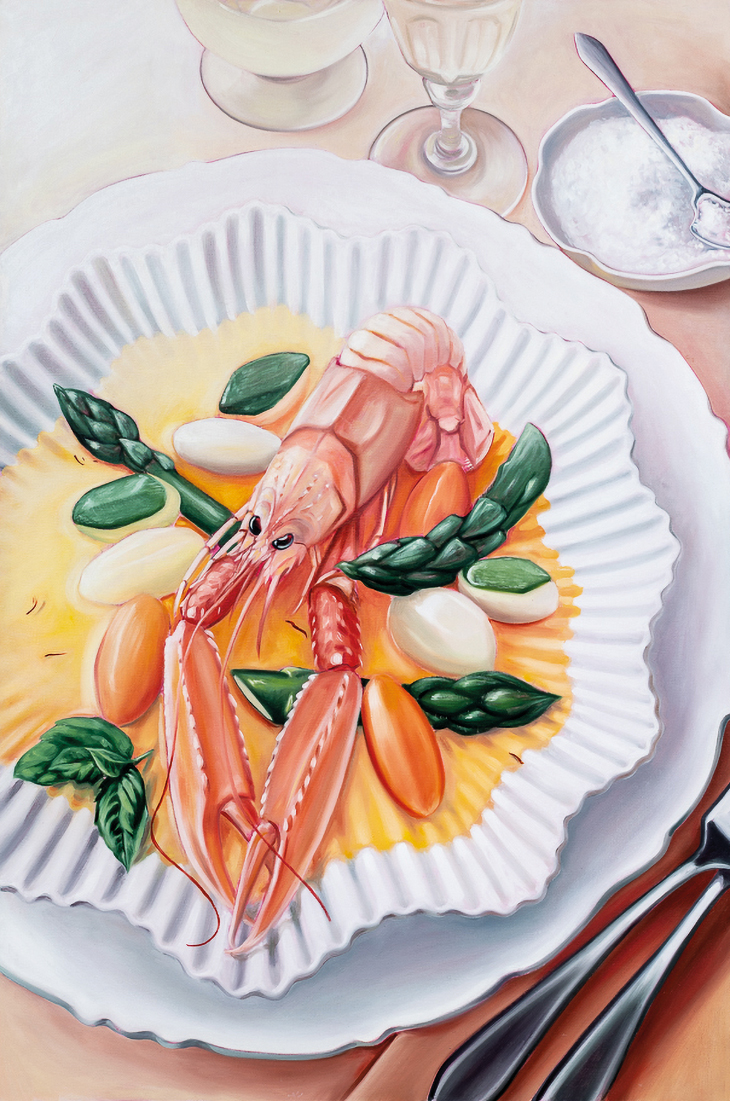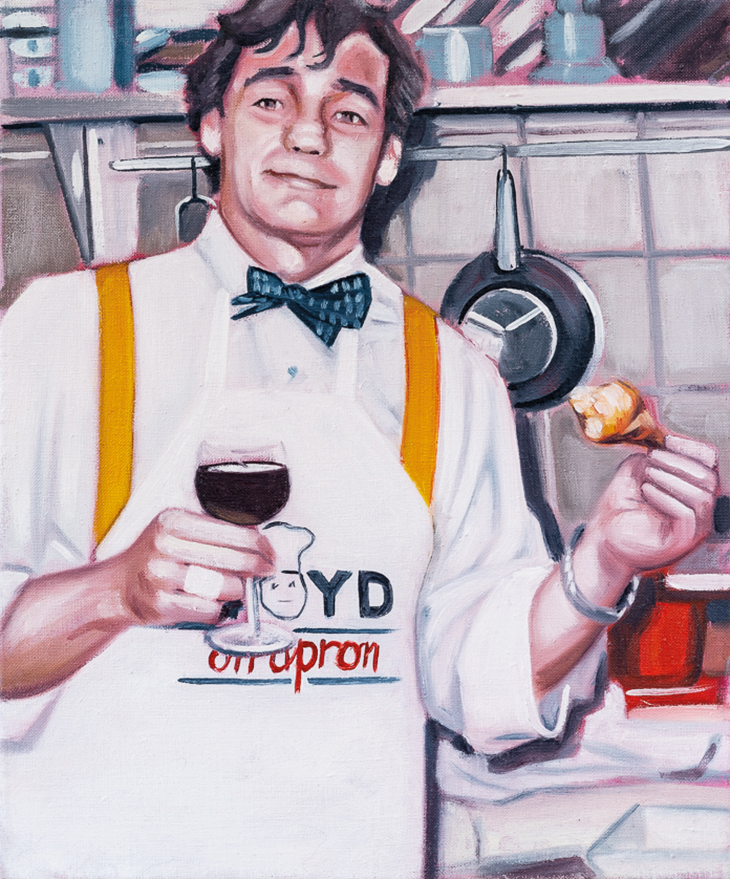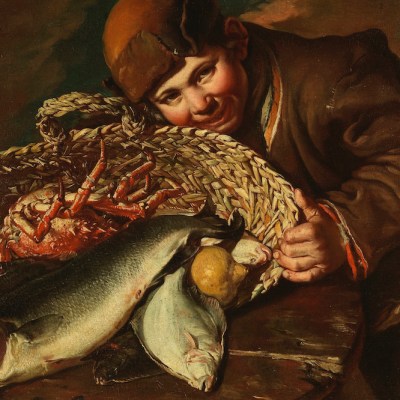From the February 2021 issue of Apollo. Preview and subscribe here.
An article on TV chefs and art could quite easily fasten on to Nigella Lawson, who was married to the art collector Charles Saatchi for a while. It could make for Nigel Slater, a ceramics enthusiast whose collection includes pots by Lucie Rie and Jennifer Lee. Or it could home in on Ken Hom, who studied history of art at UC Berkeley in the 1970s; was it mere chance that the set for his broadcasting debut, Ken Hom’s Chinese Cookery (1984), evoked art in California with its conspicuous display of a David Hockney poster behind the chef at his worktop?
A less promising focus would be Keith Floyd (1943–2009), the raconteur and roué whose topsy-turvy cookery tours of Britain and Ireland, France and beyond made him a primetime fixture from the mid 1980s onwards. So far as I know, Floyd never expressed much interested in art. Yes, there was a spell in the ’70s when he made a bit of cash selling ‘English bric-à-brac’ that he had bought in Bristol at a flea market in Provence (for the return journeys, he filled the lorry with wine). But his autobiographies – there are two of them – don’t dwell on whether he developed an eye for antiques while he had this hustle going, and these aren’t books that shy away from his enthusiasms. They have plenty of love for rugby and expensive tailoring, and plenty more for alcohol.
Mackerel with Gooseberry Sauce (2020), Lydia Blakeley

All the same, it is Floyd who hogs the airtime in ‘Classics’, an exhibition of work by Lydia Blakeley at Niru Ratnam’s gallery in London (until 6 March). Hung alongside paintings that depict the legs of young men clad in Kappa tracksuits and Reebok Classic trainers are small portraits of both Floyd and his apple-pie antithesis, Delia Smith, as well as larger works that blow up food photographs from Floyd’s books and transform them into Pop-like still lifes: Mackerel with Gooseberry Sauce, Light Stew of Dublin Bay Prawns and Asparagus in a Saffron Soup. Le Pigeon aux Petit Pois, with its two nicely roasted birds kicking back in a ball pit of green peas, is a far cry from Picasso’s cubist carve up of the same dish from 1911.
Light Stew of Dublin Bay Prawns and Asparagus in a Saffron Soup (2020), Lydia Blakeley

Blakeley isn’t much of a cook, she tells me via video link, and hasn’t tried to recreate any of the dishes that she’s painted. But she’s hooked on old cookery shows (‘There’s nothing on TV so I put on Food Network’) and has a big hoard of cookery books; the cover of her copy of Floyd on France is healthily smeared with paint. Besides, for her Floyd represents more than food. For all his rusty attitudes and widely publicised misdemeanours, he was one of the heroes of an aspirational Englishness that Blakeley encountered while growing up in the ’80s and ’90s. Here was a character who nudged a continental sophistication towards the dinner-party tables of Middle England and, at a time before cheap air travel became available, allowed for armchair escapism to destinations that for many viewers seemed brilliantly remote (like me, Blakeley has been watching a lot of Floyd during lockdown).
What was most compelling about Floyd was his style of presenting, often over a gas cooker en plein air and with a seemingly unscripted patter that gave the impression he was extemporising entire schools of regional cooking. There is something of that in Blakeley’s portrait of the chef brandishing a glass of wine and a chicken leg, a painting that ‘had to be small’, she says, ‘to contain such a big personality’. By contrast, with its careful composition and studied disarray the food photography in Floyd’s cookbooks cares far more about presentation, thereby dishing up further ideals to which the amateur chefs of England might aspire. (Blakeley has given up cooking from recipes: ‘They never look or taste as good as you imagined they would.’)
Floyd on Apron (2020), Lydia Blakeley

Transformed into large oil paintings, the images take on a strangeness, perhaps born of the friction between still-life conventions and the precepts of this mode of photography. Their cramped perspectives and tight crops, dictated by the format of the printed page, foster an intensity on this scale that is only redoubled by the new-found gigantism of a crustacean or a fillet of fish. Blakeley has also turned up the colour, introducing or heightening pinks and greens in images that, in reproduction, have a beige atmosphere no matter what their ingredients. In that sense, these paintings are a type of aspiration fulfilled; with fond irony, they magnify the dreams that were embodied in a TV chef, but they also reach a lush world beyond them.
From the February 2021 issue of Apollo. Preview and subscribe here.


